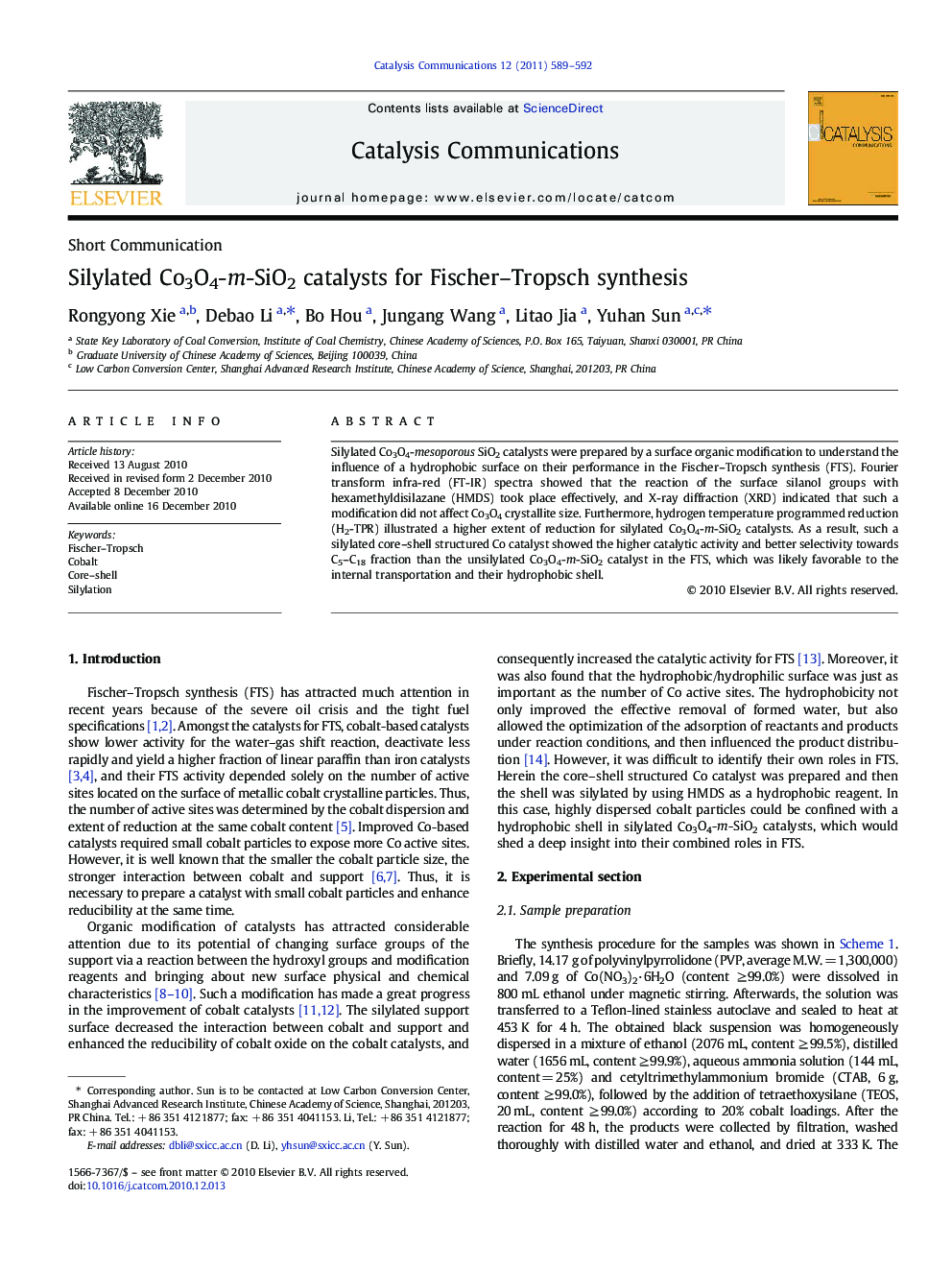| Article ID | Journal | Published Year | Pages | File Type |
|---|---|---|---|---|
| 51102 | Catalysis Communications | 2011 | 4 Pages |
Silylated Co3O4-mesoporous SiO2 catalysts were prepared by a surface organic modification to understand the influence of a hydrophobic surface on their performance in the Fischer–Tropsch synthesis (FTS). Fourier transform infra-red (FT-IR) spectra showed that the reaction of the surface silanol groups with hexamethyldisilazane (HMDS) took place effectively, and X-ray diffraction (XRD) indicated that such a modification did not affect Co3O4 crystallite size. Furthermore, hydrogen temperature programmed reduction (H2-TPR) illustrated a higher extent of reduction for silylated Co3O4-m-SiO2 catalysts. As a result, such a silylated core–shell structured Co catalyst showed the higher catalytic activity and better selectivity towards C5–C18 fraction than the unsilylated Co3O4-m-SiO2 catalyst in the FTS, which was likely favorable to the internal transportation and their hydrophobic shell.
Graphical AbstractFigure optionsDownload full-size imageDownload as PowerPoint slideResearch Highlights► Core–shell Co3O4-m-SiO2 catalyst could be prepared via the solvothermal method. ► Silylated Co3O4-m-SiO2 catalysts could be prepared using HMDS. ► Orangic modification of Co3O4-m-SiO2 catalysts could enhance reduction degree. ► Silylated Co3O4-m-SiO2 catalysts showed the better C5–C18 selectivity.
